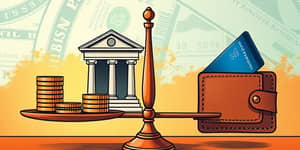
In today’s dynamic financial landscape, personal loans have emerged as a versatile tool for individuals seeking quick capital. Whether you aim to consolidate debt, cover unexpected medical bills, or invest in home improvements, understanding the full spectrum of personal loans can empower you to make informed decisions and safeguard your financial well-being.
A personal loan is a form of credit where an individual borrows a lump sum and repays it over a fixed term, typically two to seven years. lump-sum loans repaid in fixed installments offer borrowers a predictable schedule of payments—comprising principal and interest—until the balance reaches zero. Unlike mortgages or auto loans, personal loans can generally be used for any legal purpose, offering unparalleled flexibility.
Financial institutions disburse personal loan funds directly to the borrower, who then assumes full responsibility for how the money is spent. From wedding expenses to emergency repairs, this freedom, paired with a structured payment plan, has made personal loans a cornerstone of many financial strategies.
Not all personal loans are created equal. Each variant comes with its own features, eligibility requirements, and cost structures. Understanding these differences is crucial to selecting the option that aligns with your goals and risk tolerance.
By weighing these variants against your personal circumstances—credit score, collateral availability, and repayment capacity—you can pinpoint the model that aligns with both your budget and objectives.
Interest rates on personal loans fluctuate based on creditworthiness, lender type, and broader market conditions. As of 2025, the national average APR stands at average APR around 20.78% in 2025, though borrowers with excellent credit can secure rates in the single digits. Banks and credit unions often cap APRs lower than online platforms, but eligibility requirements may be stricter.
Lenders evaluate your credit score, income, and debt-to-income ratio to estimate risk. Higher credit scores generally translate into lower interest rates, whereas applicants with limited credit histories or elevated debt loads may face steeper rates or outright rejection. Securing a co-signer or offering collateral can tip the scales in your favor.
For many, these features translate into improved cash flow management, reduced stress, and the freedom to address life’s financial twists and turns without sacrificing long-term goals.
While personal loans can be a lifeline in the right circumstances, being aware of potential pitfalls helps you avoid decisions that could exacerbate your financial challenges.
Beyond interest rates, borrowers must account for fees such as origination charges, late-payment penalties, and prepayment penalties in some contracts. origination and processing fees can apply and vary by lender, often ranging from 1% to 8% of the borrowed amount. Always request a full breakdown of costs before signing.
Predatory products—like certain title loans—may disguise themselves as simple personal loans but carry predatory APRs upwards of 300%. These high-cost loans can trap vulnerable borrowers in a cycle of debt, risking asset seizure upon default. To protect yourself, verify lender licensing, read reviews, and compare multiple offers before committing.
Personal loans can be an excellent solution if you:
– Have multiple high-interest debts you want to consolidate at a lower rate.
– Require a lump sum for necessary expenses such as medical bills or home repairs.
– Possess a good to excellent credit profile and can secure reasonable APRs.
Conversely, a personal loan may not be ideal if you:
– Are financing an extremely large purchase better served by specialized loans, such as mortgages.
– Lack steady income or have a high debt-to-income ratio that jeopardizes repayment.
– Plan to use the loan for discretionary spending, which could lead to a debt spiral.
Exploring alternatives ensures you choose the most cost-effective borrowing strategy. Common options include:
Credit cards offering 0% promotional APR balance transfers for a limited period, though rates can spike afterward.
Home equity lines of credit (HELOCs) or second mortgages, which often come with lower rates but require real estate collateral.
401(k) loans, enabling you to borrow against retirement savings, but with strict repayment rules and potential long-term risks.
Peer-to-peer or family loans, which may carry lower rates or flexible terms but can strain personal relationships if expectations aren’t crystal clear.
Before you apply, ask yourself:
What will be the total cost over the life of the loan, including all fees and interest?
Can I comfortably manage the monthly payment within my budget?
How will taking this loan affect my credit score in the short and long term?
Are there lower-cost or more flexible alternatives that suit my situation better?
Having clear answers to these questions will empower you to make a strategic borrowing decision that supports, rather than undermines, your financial health.
Personal loans can serve as powerful instruments in your financial toolkit when used wisely. By understanding the types, weighing the benefits against the costs, and comparing alternatives, you can ensure that any debt you take on aligns with your long-term goals. Approach the process with diligence, ask incisive questions, and you’ll be well on your way to selecting the right borrowing choice for your needs.
References













